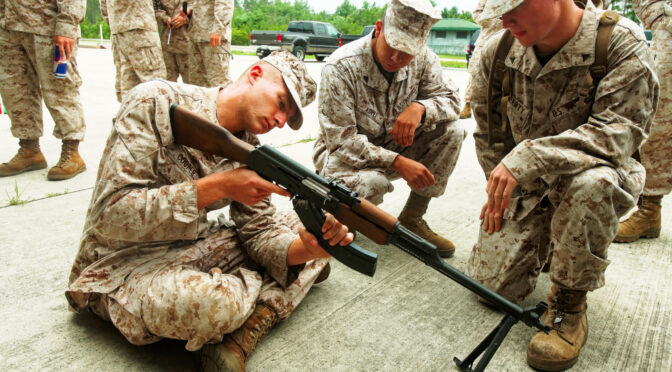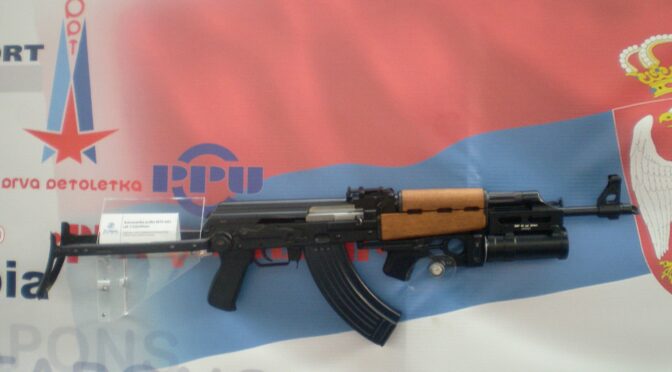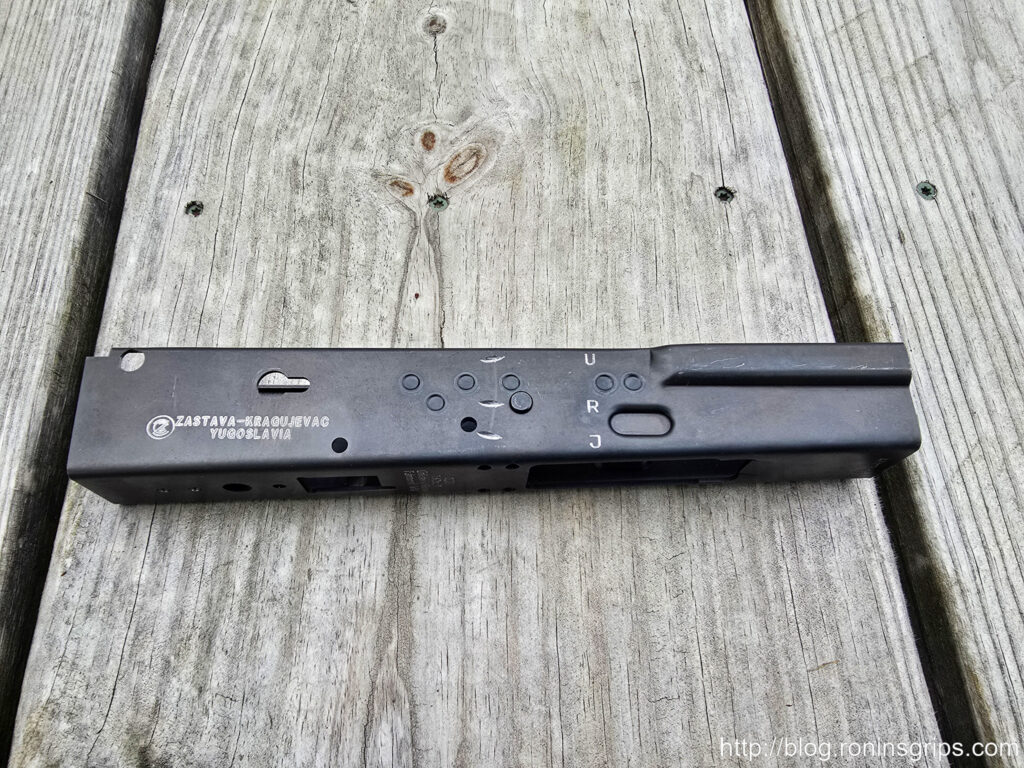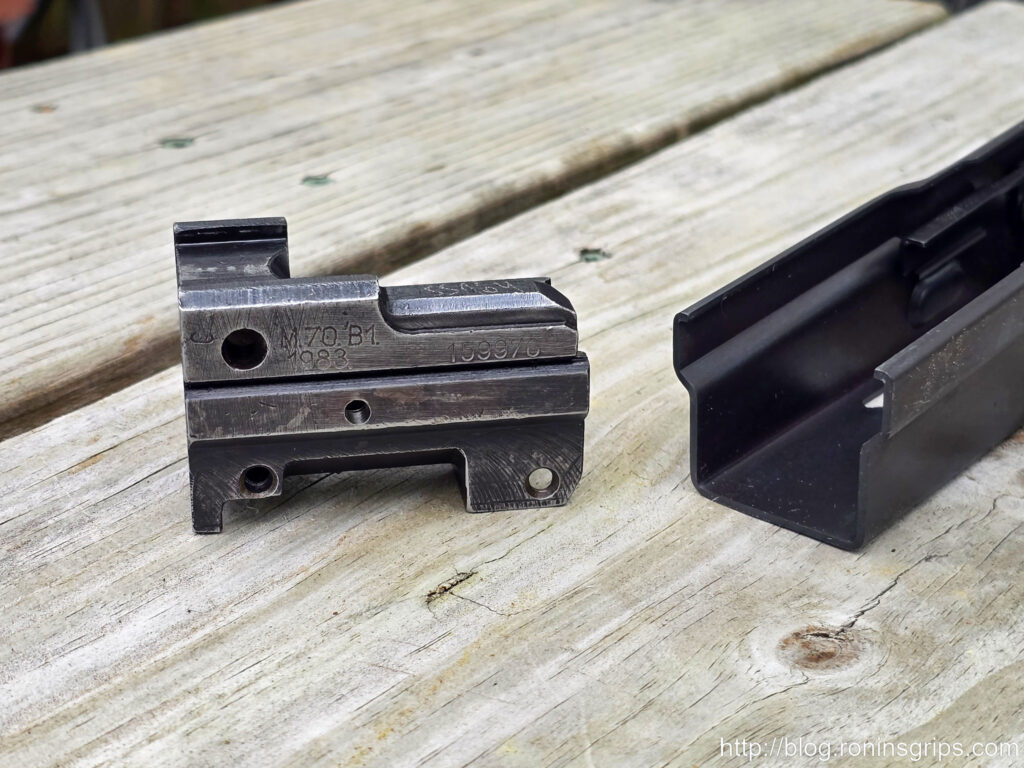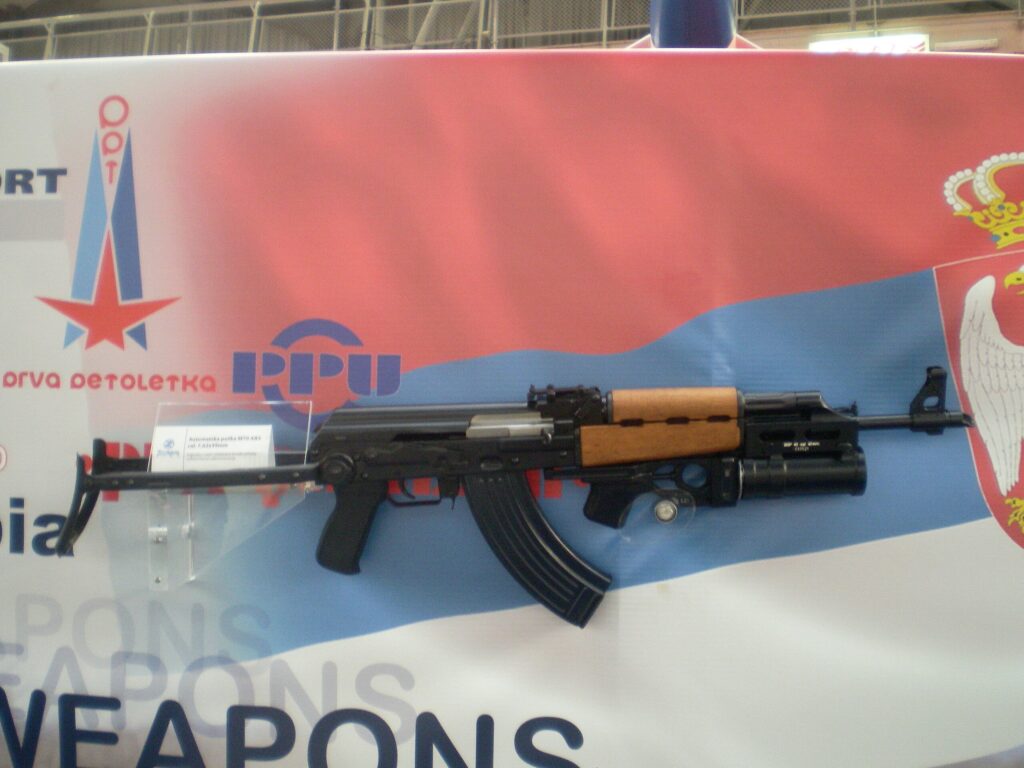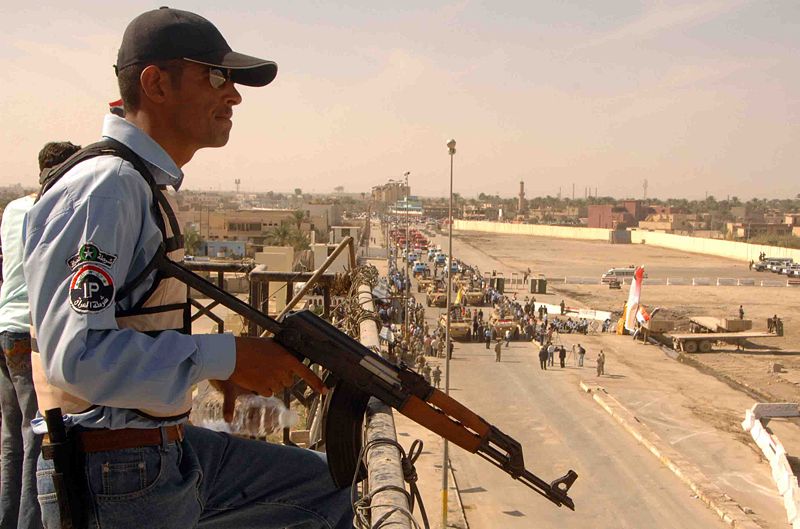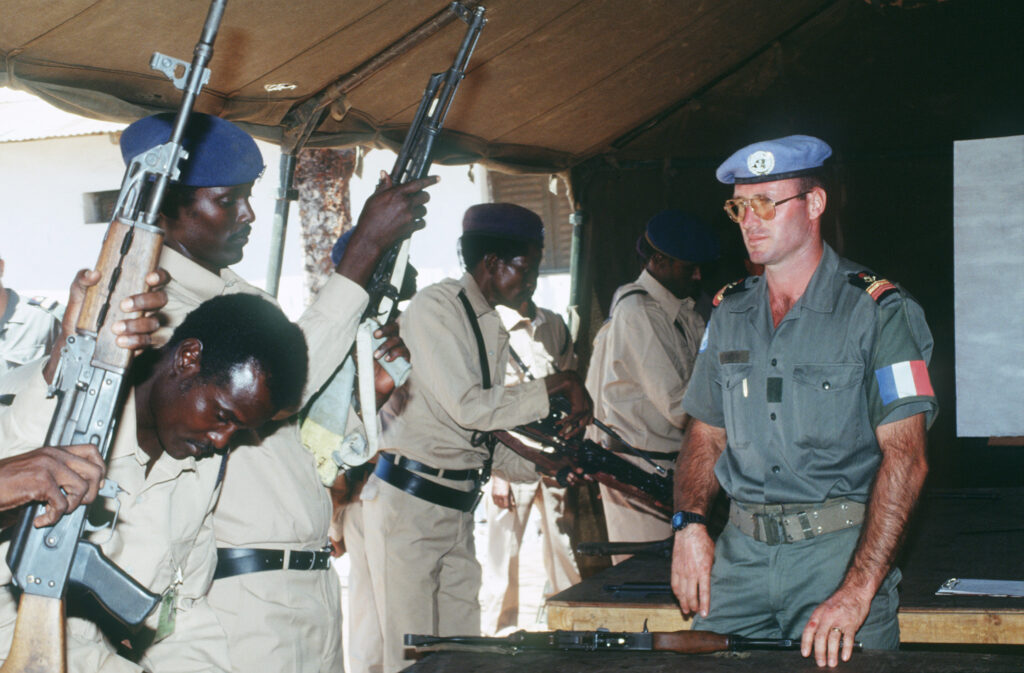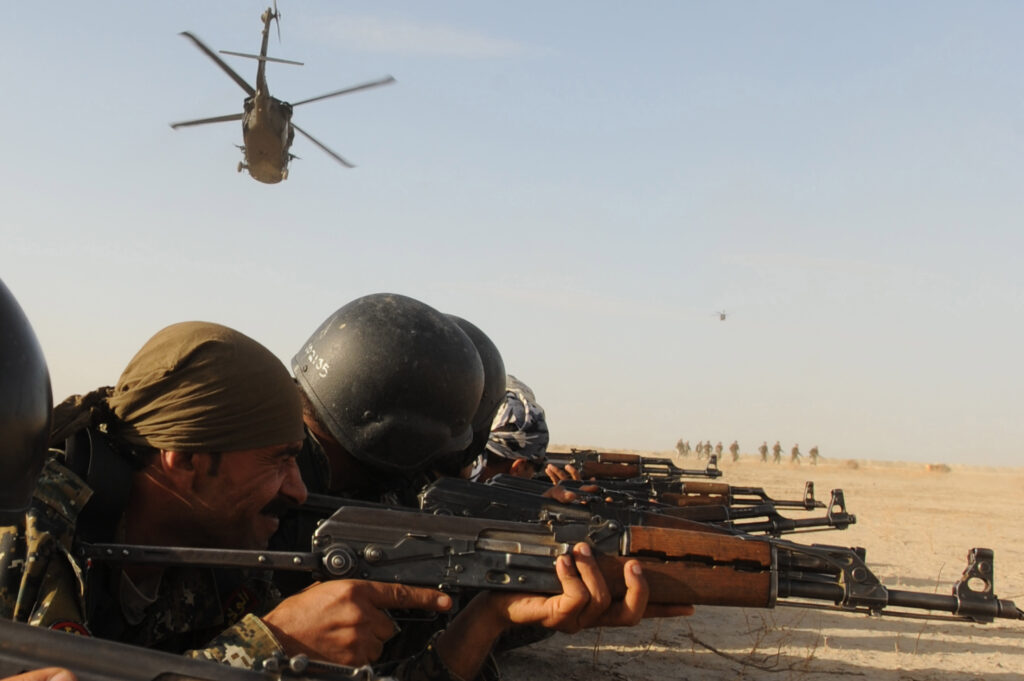If you’ve ever held a military era Yugo M70B1, you know it’s heavy for an AK. If you thought that was heavy, now lift an M72B1 … now’s that’s heavy. The M70B1 and M72B1 are my favorite AK variants. I’ve owned and sold M76s, M77s, M92s and just keep returning to the M70B1 and M72B1. No, I’m not an underfolder fan so I am specifically talking about the fixed stock rifles. At any rate, let’s look into the history of the M72 specifically.
1. Introduction: Yugoslavia’s Squad Automatic Weapon
In the decades following World War II, the Socialist Federal Republic of Yugoslavia embarked on an ambitious program to establish a self-sufficient domestic arms industry. Spearheaded by the state-owned Zastava Oružje (Zastava Arms) factory in Kragujevac, Serbia, early efforts involved experimenting with captured German designs like the StG 44 before turning towards the globally influential Kalashnikov pattern.1 While Zastava initially faced challenges in reverse-engineering early AK-47 samples, their persistence laid the groundwork for a unique family of Yugoslav small arms.1
Within the tactical doctrine of the Jugoslovenska Narodna Armija (JNA or Yugoslav People’s Army), a clear need emerged for a weapon capable of delivering sustained, accurate suppressive fire at the squad level. This requirement mirrored the Soviet military’s thinking, which led to the development of the RPK (Ruchnoy Pulemyot Kalashnikova or Kalashnikov Handheld Machine Gun) as a companion weapon to the standard AKM assault rifle. Yugoslavia’s answer to this challenge was the Zastava M72 Puškomitraljez (Light Machine Gun).2 Developed in the late 1960s and entering service around 1973, the M72 was undeniably rooted in the Kalashnikov operating system but, true to Zastava’s emerging tradition, incorporated distinct features reflecting Yugoslavian design priorities and manufacturing capabilities.2 The creation of the M72 was more than just filling a tactical niche; it was a statement of Yugoslavia’s growing industrial independence and its approach of adapting, rather than simply replicating, foreign weapon designs to meet its own specific military requirements.
2. Foundation: From the M64 to the M70
The journey to the M72 LMG begins with Zastava’s earlier work on Kalashnikov-type assault rifles. The M64 Automatska Puška (Automatic Rifle), Zastava’s first serious attempt at a domestic AK, served as a crucial, albeit limited-production, developmental stepping stone.1 Though not adopted in large numbers by the JNA, the M64 introduced several features that would become hallmarks of Yugoslav Kalashnikov derivatives. These included a milled receiver, heavily based on the Soviet AK Type 3 but with cosmetic differences like a raised step on the left side, a thicker (though not chrome-lined) barrel, and, significantly, an integral folding grenade sight mounted on the gas block.1 This sight, when raised, also acted as a gas cut-off, safely disabling the gas system for launching rifle grenades – a capability the JNA valued highly. Other M64 innovations included a unique latch mechanism to prevent the dust cover from being dislodged by grenade recoil and, on some prototypes, a bolt hold-open device.1
Building on the M64 experience, Zastava developed the AP M70 (Automatska Puška Model 1970), which was formally adopted by the JNA in 1970.1 The M70 represented a refinement and simplification of the M64 design for mass production. While the complex bolt hold-open mechanism within the receiver was removed to cut costs, Zastava introduced proprietary magazines with follower plates designed to hold the bolt open after the last round, achieving a similar function.1
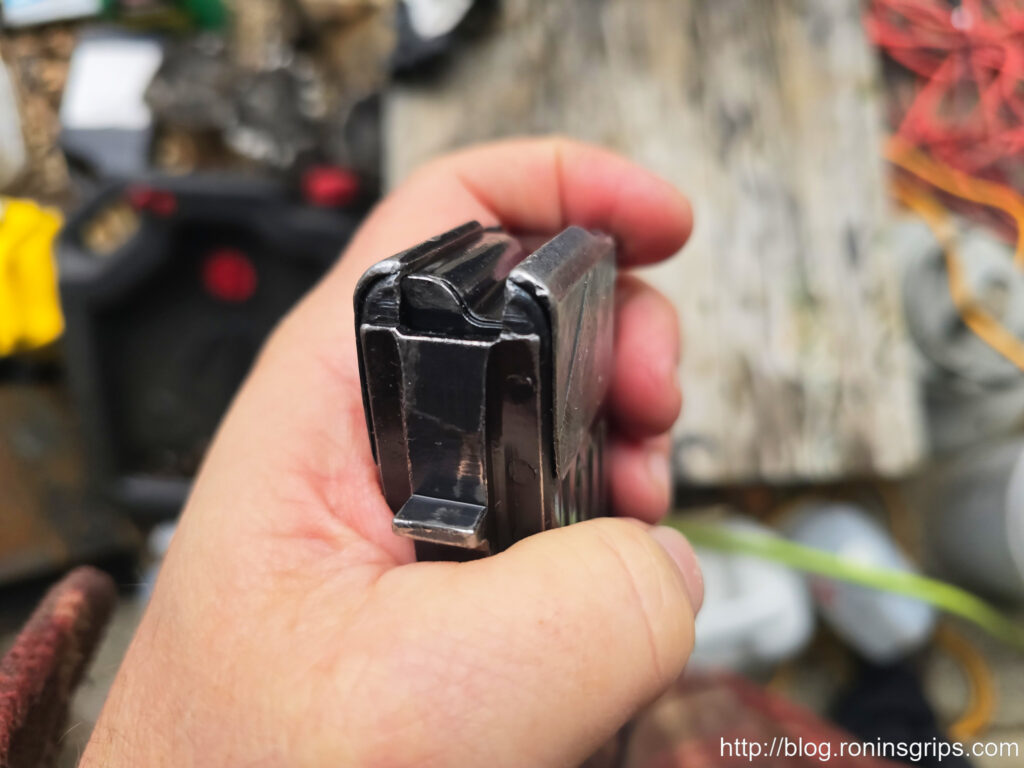
Crucially, the M70 retained the vital grenade launching sight and gas cut-off system. Early M70s featured milled receivers like the M64, but production soon shifted towards using pressed and pinned barrels and, eventually, receivers made from stamped sheet steel.1 These stamped receiver models, designated M70B1 (fixed stock) and M70AB1/AB2 (underfolding stock), featured receivers notably thicker (1.5mm) than the standard Soviet AKM (1.0mm) and incorporated a distinctive bulged front trunnion.6 This added reinforcement was widely seen as necessary to withstand the repeated stresses of launching rifle grenades.1 The M70B1 also introduced a longer wooden handguard with three cooling slots, another visual identifier of Yugoslav AK variants.6
The M70, particularly in its robust stamped receiver M70B1 configuration, provided the direct technical foundation upon which the M72 LMG was built.2 The M72 inherited the M70’s basic operating mechanism, receiver construction principles, and general layout. The emphasis on receiver strength in the M70, driven largely by the requirement to handle rifle grenades, inadvertently created an exceptionally sturdy platform. This inherent robustness proved highly advantageous when adapting the design for the M72’s intended role as a light machine gun, a role demanding durability under the heat and stress of sustained automatic fire, even though the M72 itself would dispense with the grenade launching capability.2
3. The Birth of the M72: Adapting the RPK Concept
Zastava’s objective in developing the M72 was clear: create a light machine gun based on the M70 assault rifle, mirroring the relationship between the Soviet AKM and RPK.2 Such an approach offered significant logistical advantages, ensuring commonality of ammunition (7.62x39mm M67), operating principles, and many internal parts between the standard issue rifle and the squad’s light support weapon. This simplified training, maintenance, and supply lines for the JNA.
To fulfill the LMG role, Zastava incorporated several features standard to the RPK concept:
- Longer, Heavier Barrel: The M72 was fitted with a significantly longer and heavier barrel than the M70 – typically cited as 542mm (approximately 21.3 inches) compared to the M70’s 415mm (16.3 inches).1 This increased the muzzle velocity from the M70’s 720 m/s to 745 m/s for the M72, enhancing effective range, and provided greater mass to absorb and dissipate heat during sustained fire.2
- Integral Bipod: A folding bipod was mounted near the muzzle, providing a stable firing platform when deployed.2
- Reinforced Receiver: The M72 utilized the robust receiver design principles established with the M70, whether milled in early versions or the heavy-gauge stamped type in later models.4
- Modified Stock: While Soviet RPKs featured a distinct “clubfoot” stock for better support, early Zastava M72s used a fixed wooden stock shaped similarly to the standard AKM/M70 rifle.4
- Windage Adjustable Rear Sight: The M72 has an elevation and windage adjustable rear sight but they are not nightsights. The M70 series has an elevation adjustable but fixed windage rear sight plus night sights front and rear.
However, Zastava did not merely copy the RPK. The M72 incorporated distinctive Yugoslav elements:
- Barrel Cooling Fins: The most visually striking and functionally significant Yugoslav innovation was the inclusion of prominent cooling fins machined into the exposed portion of the barrel, just forward of the handguard.2 These fins increased the barrel’s surface area, promoting more efficient air cooling during prolonged automatic fire sequences. This feature, absent on Soviet or Romanian RPKs, suggests that Zastava’s engineers specifically identified potential barrel overheating under sustained fire as a critical area for improvement in the LMG role and implemented a proactive engineering solution, even though it added complexity to barrel manufacturing. It points towards an independent design assessment focused on enhancing practical performance beyond simply adding barrel mass.
- Omission of Scope Rail: Unlike many contemporary LMGs and later RPK variants, the standard M72 series typically lacked the side-mounted scope rail common on many Kalashnikov-pattern weapons.4 Optical sights required optional mounts.
- No Grenade Launching Capability: In a departure from its M70 parent, the M72 design omitted the rifle grenade launching sight and the associated gas cut-off mechanism.2 This simplified the gas block and front sight assembly, focusing the weapon solely on its machine gun role. Also, the top cover lock found on the M70 series was not needed either.
Early development reports also suggest that Zastava experimented with quick-change barrels for the M72, a feature common on heavier machine guns, but ultimately abandoned this complexity in favor of a simpler, fixed-barrel design for the production models.2
4. The Milled Receiver M72: The First Generation
The initial production version of the Zastava M72, entering service around 1973, featured a receiver machined from a solid block of steel, following the manufacturing techniques used for the M64 and early M70 rifles.2 These milled receivers adhered to the Zastava pattern, likely heavier than their Soviet counterparts and incorporating subtle differences in geometry.1 Evidence suggests there might have been minor variations even among these early milled M72s, sometimes retrospectively distinguished as M72A (potentially using M64-style receivers with threaded barrels and remnants of bolt-hold-open provisions) and M72B (using slab-sided receivers with pressed/pinned barrels).10 Common characteristics of this first generation included the heavy, finned 542mm barrel, a fixed wooden stock shaped like that of the M70, an integral folding bipod, standard adjustable iron sights graduated to 1000 meters, and chambering for the 7.62x39mm cartridge.2 The weight was substantial, around 5.0 to 5.5 kg empty.2
Compared to the Soviet RPK of the era, the milled M72 stood apart due to its unique receiver details, the distinctive cooling fins, and the lack of the RPK’s characteristic clubfoot stock.4 Compared to its M70 sibling, the M72 was easily identified by its much longer and heavier finned barrel, the bipod, and the absence of the grenade sight.2 The decision to launch the M72 with a milled receiver likely stemmed from Zastava’s existing production infrastructure and perhaps an initial design emphasis on maximum possible durability, a common attribute associated with milled Kalashnikovs. The subtle variations noted within the milled production run hint at ongoing refinement and potential manufacturing adjustments even before the major shift towards stamped receivers occurred.7
5. Evolution: The Stamped Receiver M72B1 and M72AB1
Mirroring the global evolution of Kalashnikov manufacturing seen in the transition from the AK-47 to the AKM, Zastava eventually shifted M72 production from milled receivers to stamped sheet steel receivers. This move resulted in the M72B1, which became the most common and widely produced variant of the Yugoslav LMG.2 The primary drivers for this change were economic and logistical: stamped receivers are significantly faster and less expensive to manufacture than milled ones, allowing for higher production volumes.1
Despite the shift to stamping, Zastava maintained a focus on robustness. The M72B1’s receiver was formed from a thicker 1.5mm steel sheet, compared to the 1.0mm standard for Soviet AKM and RPK rifles.6 It also incorporated the heavy, bulged front trunnion characteristic of the M70B1 assault rifle, providing extra support at the critical barrel-receiver interface.7 This commitment to heavier construction ensured the stamped M72B1 retained a high degree of strength and durability suitable for its role, even without the solid steel receiver block. Other features remained largely consistent with the earlier milled M72: the signature finned heavy barrel, fixed wooden stock (typically AKM/M70 pattern), and usually a fixed folding bipod.2
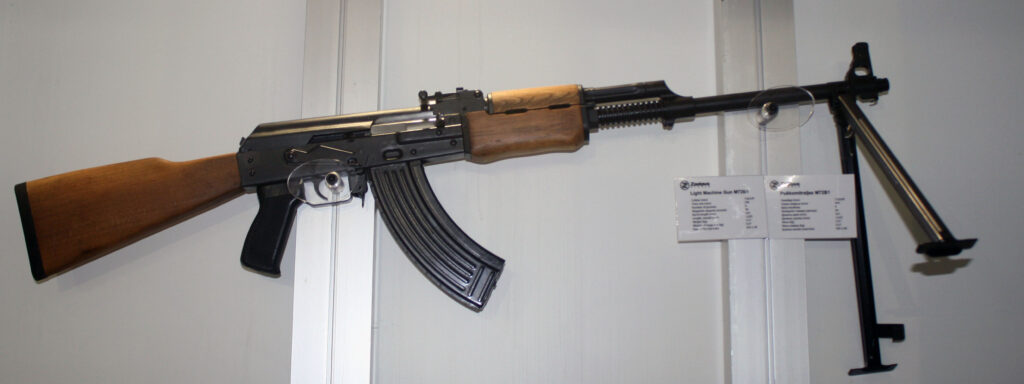
Recognizing the need for a more compact weapon for specialized troops, Zastava also developed the M72AB1 variant.2 The defining feature of the M72AB1 was its sturdy, steel underfolding stock, patterned after the one used on the M70AB2 assault rifle.2 This allowed the overall length of the weapon to be significantly reduced for easier storage and maneuverability within vehicles or for airborne operations.3 The M72AB1 is often noted as being quite unique, potentially the only mass-produced RPK-type light machine gun to utilize this style of underfolding stock, which is more commonly associated with assault rifles.2 Some sources also suggest that the bipod on the M72AB1 variant was designed to be detachable, unlike the typically fixed bipod of the M72 and M72B1, further enhancing its adaptability.4
The evolution from the milled M72 to the stamped M72B1 and M72AB1 showcases Zastava’s ability to adapt modern manufacturing techniques for cost-effectiveness while preserving the core Yugoslavian design philosophy emphasizing robustness, evidenced by the heavy-gauge receiver and bulged trunnion. The development of the M72AB1 further demonstrates a tailoring of the basic design to meet specific operational requirements of the JNA, adding versatility to the M72 family.
6. Foreign Production: The Iraqi Al Quds
The Zastava M72’s reputation for robustness and reliability extended beyond Yugoslavia’s borders. Around 1978, Iraq secured a license from Zastava to manufacture the M72 domestically.2 Production was undertaken by the state-run Al-Qadissiya Establishments.2 The Iraqi-produced versions were designated Al Quds (Arabic: القدس), meaning “The Holy,” a reference to Jerusalem.2
Iraq manufactured licensed copies corresponding to both the fixed-stock M72B1 and the underfolding-stock M72AB1 Yugoslav models.3 The Al Quds became a standard issue LMG within the Iraqi armed forces and saw extensive service. This licensing agreement stands as the most significant instance of foreign production for the M72 design. It not only highlights the international regard for the Yugoslav weapon’s qualities but also underscores the maturity and export success of Yugoslavia’s arms industry during that period. Yugoslavia, under Josip Broz Tito, cultivated relationships with many Non-Aligned Movement nations, including Iraq, positioning itself as an alternative arms supplier to the major Cold War blocs. The selection of the Zastava M72 design for licensed production, potentially over the Soviet RPK itself, may reflect specific Iraqi preferences for the M72’s features (like the cooling fins or heavier receiver) or simply more favorable terms offered by Zastava. The Al Quds production significantly contributed to the proliferation of the M72 pattern, particularly throughout the Middle East.2
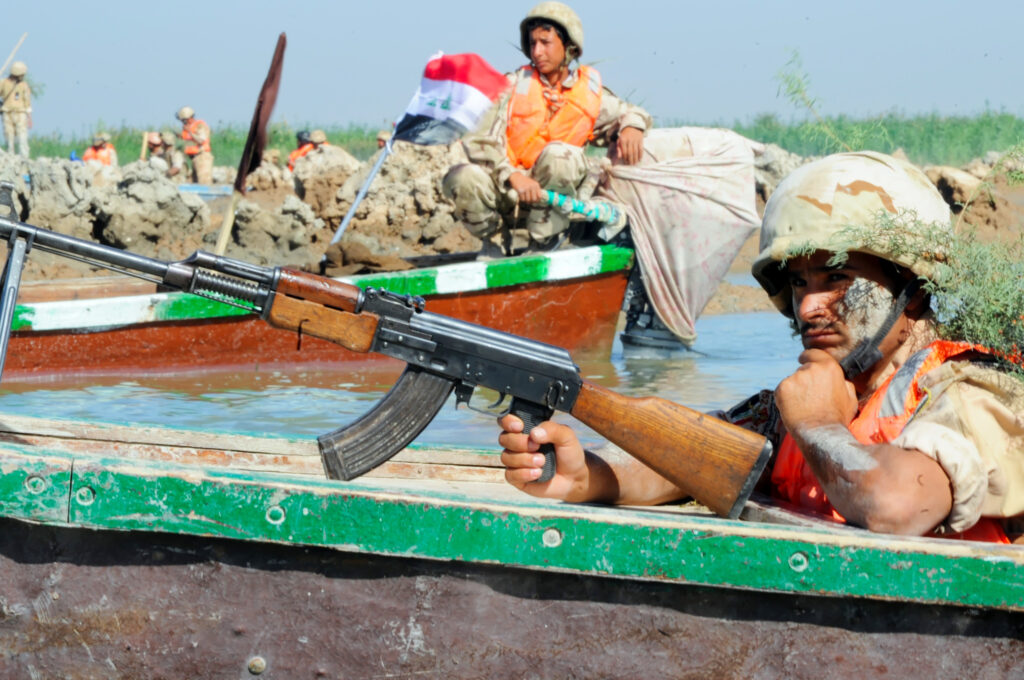
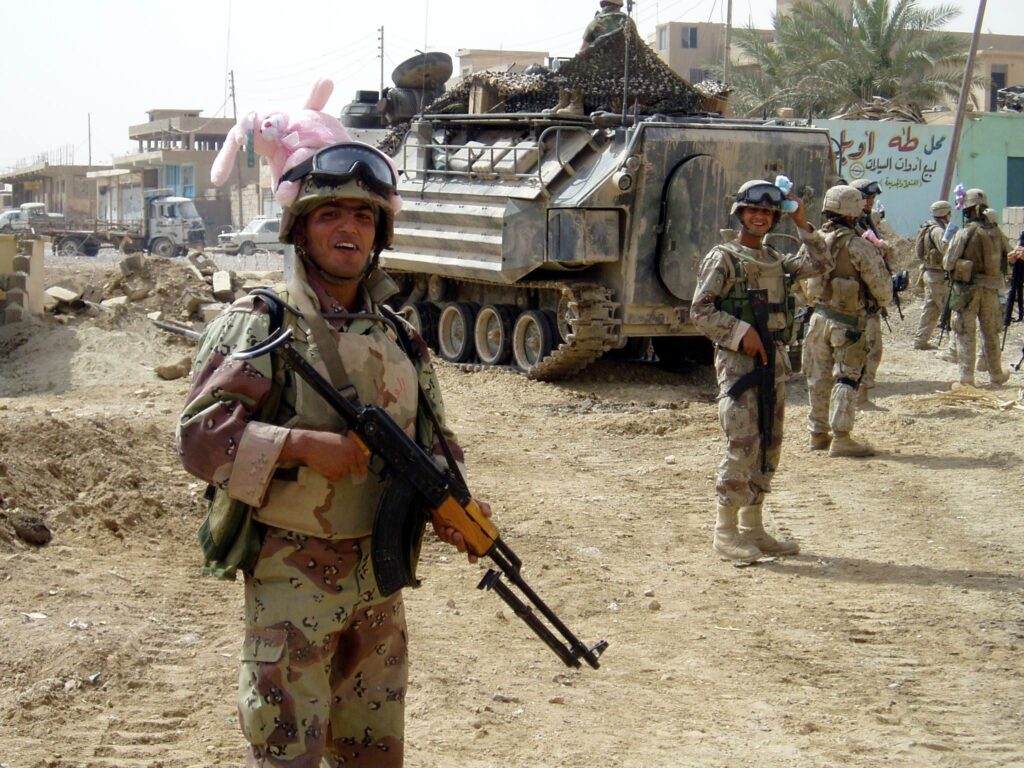
7. Comparative Overview: The M72 Family
The Zastava M72 evolved through several distinct variants, primarily differing in receiver construction and stock configuration. While all shared the core LMG features of a long, heavy, finned barrel and bipod, understanding their key differences clarifies their development path and intended roles.
The following table summarizes the main characteristics of the primary Yugoslav M72 variants:
Zastava M72 Family Variants Comparison
| Feature | M72 (Milled) | M72B1 (Stamped, Fixed Stock) | M72AB1 (Stamped, Folding Stock) |
| Receiver Type | Milled Steel | Stamped Steel (1.5mm thickness) | Stamped Steel (1.5mm thickness) |
| Stock Type | Fixed Wood (AKM/M70 style) | Fixed Wood (AKM/M70 style) | Underfolding Metal (M70AB2 style) |
| Barrel | Heavy Profile, Finned, ~542mm | Heavy Profile, Finned, ~542mm | Heavy Profile, Finned, ~542mm |
| Bipod Type | Fixed Folding | Fixed Folding | Detachable Folding (often cited) |
| Approx. Weight | ~5.5 kg | ~5.0 kg | ~5.0 kg |
| Overall Length | ~1025 mm | ~1025 mm | ~1025 mm (extended) / ~765 mm (folded) |
| Key Identifiers | Solid milled receiver; fixed stock | Stamped receiver, bulged trunnion; fixed stock | Stamped receiver, bulged trunnion; underfolding stock |
Note: Weights and exact bipod configurations can vary slightly based on specific production runs and sources. 2
This comparison highlights the M72 family’s clear lineage. The initial model prioritized ultimate durability via milling. The subsequent M72B1 adopted more efficient stamped construction while retaining robustness through heavier materials and design features like the bulged trunnion. The M72AB1 adapted this stamped platform for portability, catering to specialized military units. Throughout this evolution, the core concept – a squad automatic weapon built on the Yugoslav Kalashnikov pattern, distinguished by its heavy, finned barrel – remained consistent.
8. Legacy and Conclusion
The Zastava M72 proved to be a durable and effective light machine gun. It served as the standard squad automatic weapon for the Jugoslovenska Narodna Armija and continued in service with the armed forces of the successor states formed after Yugoslavia’s dissolution.4 Its ruggedness ensured its appearance in numerous conflicts across the globe, from the Balkan wars of the 1990s to conflicts in Iraq, Afghanistan, and various parts of Africa, often wielded by both state militaries and non-state armed groups.4
Generally regarded as a high-quality Kalashnikov derivative, the M72 earned a reputation for reliability and solid construction.6 Its unique features, particularly the barrel cooling fins, set it apart visually and functionally from its Soviet RPK counterpart and other RPK-pattern LMGs. While perhaps heavier than some contemporaries due to its robust build, this contributed to its perceived durability under harsh conditions and sustained fire.
In the vast family tree of Kalashnikov weapons, the Zastava M72 represents a significant and distinct branch. It exemplifies Yugoslavia’s successful approach to adapting a proven foreign design, enhancing it with unique engineering solutions born from independent assessment and national manufacturing capabilities. The M72 was not merely an RPK clone; it was a Yugoslav Puškomitraljez, tailored to meet specific requirements and built to last. Its enduring presence on battlefields decades after its introduction is a testament to the fundamental soundness of its Zastava M70-derived design, enhanced for the demanding role of a light machine gun, and a lasting symbol of Zastava Oružje‘s Cold War-era prowess in small arms development.
Image Sources
The main photo was obtained from Wikipedia and the exposure increased to show the M72 a bit better. The description of the photo is “U.S. Marine Corps Lance Cpl. Branden G. Cooper, left, with Security Cooperation Task Force Africa Partnership Station 2012, receives familiarization training on a foreign weapon system at Marine Corps Base Camp Lejeune, N.C., May 18, 2012. The training was designed to educate the Marines in order to work effectively with foreign host nations during deployment. Africa Partnership Station is an international security cooperation initiative facilitated by Commander, U.S. Naval Forces Europe-Africa aimed at strengthening global maritime partnerships through training and collaborative activities in order to improve maritime safety and security in Africa.” The Author is SSgt Jemssy Alvarez Jr.
Zastava M72B1 exhibited at the Partner 2015 show. The author is Srđan Popović. The photo is from Wikimedia.
“Iraqi army soldiers assigned to 3rd Battalion, 52nd Brigade, 14th Iraqi Army prepare to assault an objective during a live fire exercise on Tealeaf Island near Basra, Iraq, Oct. 25, 2010. Iraqi forces conducted live fire exercises to better prepare them for real world situations with U.S. soldiers with 1st Infantry Division on hand to provide advice and assistance in support of Operation New Dawn.” The author is SSgt Michael Casteel. The image is from Wikimedia
This Iraqi soldier is carrying a M72AB1 pattern rifle. Whether an Al Quds or a Zastava, I am not sure. Most likely an Al Quds. The photo was obtained from Wikimedia and the photo is attributed to James McCauley. Junly 17, 2005. The author noted “The Iraqi soldiers liked the idea of passing out teddy bears to kids. So, they attached them to their helmets like we did.”
Works cited
- Zastava M70 assault rifle – Wikipedia, accessed May 12, 2025, https://en.wikipedia.org/wiki/Zastava_M70_assault_rifle
- Zastava M72 | Weaponsystems.net, accessed May 12, 2025, https://weaponsystems.net/system/377-Zastava+M72
- Zastava M72 — Википедија, accessed May 12, 2025, https://sr.wikipedia.org/sr-el/%D0%97%D0%B0%D1%81%D1%82%D0%B0%D0%B2%D0%B0_%D0%9C72
- Zastava M72 – Wikipedia, accessed May 12, 2025, https://en.wikipedia.org/wiki/Zastava_M72
- Застава М72 | Wiki | S.T.A.L.K.E.R Новая Зона. Amino, accessed May 12, 2025, https://aminoapps.com/c/stalkernovai873/page/item/zastava-m72/aPJM_6pc8IEXVBeWmrDqXez6r4bBnlgxr
- Zastava M70 | Weaponsystems.net, accessed May 12, 2025, https://weaponsystems.net/system/376-Zastava+M70
- What are the Differences between the yugo milled and stamped RPK other than the receivers? (Only yugo rpk) : r/ak47 – Reddit, accessed May 12, 2025, https://www.reddit.com/r/ak47/comments/98wdmy/what_are_the_differences_between_the_yugo_milled/
- Zastava M72 | Weaponsystems.net, accessed May 12, 2025, https://development.weaponsystems.net/system/377-Zastava%20M72
- The Zastava M72 has arrived as per email from ZUSA. : r/ak47 – Reddit, accessed May 12, 2025, https://www.reddit.com/r/ak47/comments/1hixbvo/the_zastava_m72_has_arrived_as_per_email_from_zusa/
- Was the zastava m72 ever produced in a milled version? It’s an original early M72? – Reddit, accessed May 12, 2025, https://www.reddit.com/r/ak47/comments/sjejgv/was_the_zastava_m72_ever_produced_in_a_milled/
- Застава М72 — Википедија, accessed May 12, 2025, https://sr.wikipedia.org/wiki/%D0%97%D0%B0%D1%81%D1%82%D0%B0%D0%B2%D0%B0_%D0%9C72
- Югославская автоматическая винтовка «Застава» – боевой и гражданский варианты, accessed May 12, 2025, https://www.militaryplatform.ru/10307-jugoslavskaja-avtomaticheskaja-vintovka-zastava-boevoj-i-grazhdanskij-varianty.html
- Just picked up the new M72 (low serial #). Here are my initial impressions. : r/zastavaarms101 – Reddit, accessed May 12, 2025, https://www.reddit.com/r/zastavaarms101/comments/1hx06ru/just_picked_up_the_new_m72_low_serial_here_are_my/
If you find this post useful, please share the link on Facebook, with your friends, etc. Your support is much appreciated and if you have any feedback, please email me at in**@*********ps.com. Please note that for links to other websites, we are only paid if there is an affiliate program such as Avantlink, Impact, Amazon and eBay and only if you purchase something. If you’d like to directly contribute towards our continued reporting, please visit our funding page.
